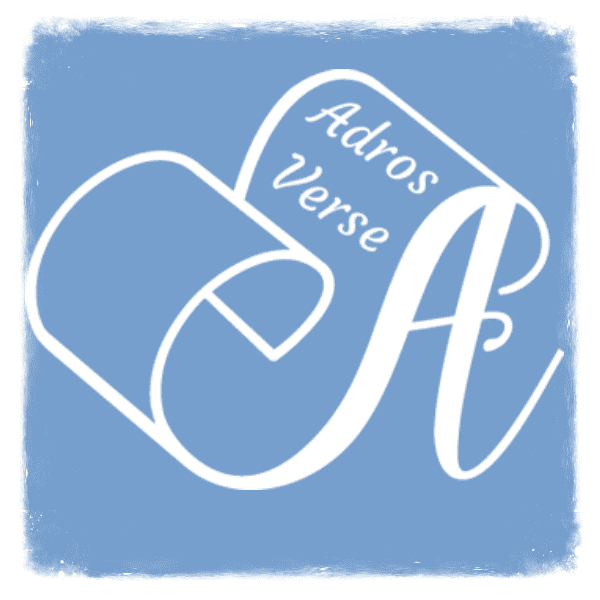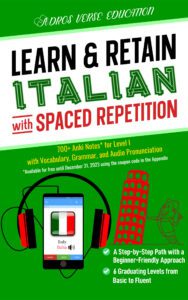The weak radicals in Arabic are و (wāw) ‘w’ and ي (yā’) ‘y.’ A verb that includes at least one weak radical is called a فِـعْـل مُـعْـتَـلّ (fi‘l mu‘tall) ‘weak verb.’
Table of Contents
- Strong vs. Weak Verbs in Arabic
- Verbs with Weak Initial Radical – Assimilated Verbs
- Verbs with Weak Middle Radical – Hollow Verbs
- Verbs with Weak Final Radical – Defective Verbs
- Verbs with Two Weak Radicals – Doubly Weak Verbs
- Weak Verbs with Hamzah
- Level VI – Advanced II (C2)
Strong vs. Weak Verbs in Arabic
In general, verbs in Arabic are classified into two types: صَـحـيـح (ṣaḥīḥ) ‘strong’ and مُـعْـتَـلّ (mu‘tall) ‘weak.’

We previously discussed irregular strong verbs, namely مَـهْـمـوز (mahmūz) ‘hamzated’ and مُـضَـعَّـف (muḍa‘‘af) ‘doubled’ verbs, in Level V, Lesson 2.
In this lesson, we will discuss irregular weak verbs in detail.
Verbs with Weak Initial Radical – Assimilated Verbs
A verb with a weak initial radical—و (wāw) ‘w’ or ي (yā’) ‘y’—is called فِـعْـل مِـثـال (fi‘l mithāl) ‘assimilated verb.’
Irregular verbs in this group assimilate the initial weak radical into the subject prefix in the present tense.
Consider the verb وَجَـدَ (wajada) ‘he found,’ which is regular in the past tense but drops its initial weak radical, و (wāw) ‘w,’ in the present tense conjugation, as shown below:
Notice the absence of the weak initial radical, و (wāw) ‘w,’ in all present-tense conjugation forms.
The weak initial radical is also dropped in the imperative forms of the verb وَجَـدَ (wajada) ‘he found,’ as shown in the following conjugation table:
| Sing. m. | Sing. f. | Dual | Plural m. | Plural f. |
| جِــدْ jid | جِــدي jidī | جِــدا jidā | جِــدوا jidū | جِــدْنَ jidna |
Other examples of verbs with و (wāw) ‘w’ as a weak initial radical include وَعَـدَ (wa‘ada) ‘he promised,’ وَضَـعَ (waḍ‘a) ‘he put,’ وَقَـفَ (waqafa) ‘he stood or stopped,’ and وَصَـلَ (waṣala) ‘he connected or arrived.’
| Past third-person singular m. | وَعَـدَ wa‘ada | وَضَـعَ waḍa‘a | وَقَـفَ waqafa | وَصَـلَ waṣala |
| Present third-person singular m. | يَـعِـدُ ya‘idu | يَـضَـعُ yaḍa‘u | يَـقِـفُ yaqifu | يَـصِـلُ yaṣilu |
| Imperative second-person singular m. | عِـدْ ‘id | ضَـعْ ḍa‘ | قِـفْ qif | صِـلْ ṣil |
Most verbs with و (wāw) ‘w’ as a weak initial radical follow the conjugation pattern of the verb وَجَـدَ (wajada) ‘he found’ in the present and the imperative. There are only a few exceptions, such as وَجِـعَ (waji‘a) ‘he felt pain,’ وَجِـلَ (wajila) ‘he feared,’ وَقُـرَ (waqura) ‘he became revered,’ and وَسُـمَ (wasuma) ‘he became handsome.’
| Past third-person singular m. | وَجِـعَ waji‘a | وَجِـلَ wajila | وَقُـرَ waqura | وَسُـمَ wasuma |
| Present third-person singular m. | يَـوْجَـعُ yawja‘u | يَـوْجَـلُ yawjalu | يَـوْقَـرُ yawqaru | يَـوْسُـمُ yawsumu |
| Imperative second-person singular m. | ايـجَـعْ īja‘ | ايـجَـلْ ījal | اوقَـرْ ūqar | اوسُـمْ ūsum |
In contrast, verbs with ي (yā’) ‘y’ as a weak initial radical generally follow regular conjugation patterns. They do not assimilate the initial weak radical into the subject prefix in the present tense, and do not drop the weak initial radical in the imperative. Here are some examples:
| Past third-person singular m. | يَـبِـسَ yabisa it became dry | يَـقِـظَ yaqiẓa he became awake | يَـفَـعَ yafa‘a he hit puberty | يَـنَـعَ yana‘a it became ripe |
| Present third-person singular m. | يَـيْـبَـسُ yaybasu | يَـيْـقَـظُ yayqaẓu | يَـيْـفَـعُ yayfa‘u | يَـيْـنَـعُ yayna‘u |
| Imperative second-person singular m. | ايـبَـسْ ības | ايـقَـظْ īqaẓ | ايـفَـعْ īfa‘ | ايـنَـعْ īna‘ |
Verbs with Weak Middle Radical – Hollow Verbs
A verb with a weak middle radical—و (wāw) ‘w’ or ي (yā’) ‘y’—is called فِـعْـل أَجْـوَف (fi‘l ’ajwaf) ‘hollow verb.’
In the third-person singular masculine past tense, hollow verbs have an ﺍ (’alif) as the middle letter of the basic verb form, e.g., قـالَ (qāla) ‘he said.’
The middle ﺍ (’alif) in the past tense does not indicate whether it is derived from و (wāw) ‘w’ or ي (yā’) ‘y.’ By examining the third-person singular masculine present tense or the verbal noun, one can infer the middle radical, and thus the root of the verb.
For example, the third-person singular masculine present tense of the verb قـالَ (qāla) ‘he said’ is يَـقـولُ (yaqūlu) ‘he says,’ and its verbal noun is قَــوْل (qawl) ‘saying.’ Thus, we can infer that the middle ﺍ (’alif) is derived from و (wāw) ‘w,’ and that the root of the verb قـالَ (qāla) is ق – و – ل (q – w – l).
Other examples of hollow verbs include بـاعَ (bā‘a) ‘he sold,’ كـانَ (kāna) ‘he was,’ نـامَ (nāma) ‘he slept,’ عـادَ (‘āda) ‘he returned,’ خـافَ (khāfa) ‘he feared,’ نـالَ (nāla) ‘he obtained,’ مـالَ (māla) ‘he inclined,’ and سـارَ (sāra) ‘he walked.’
| Past | Present | Verbal Noun | Root |
| كـانَ kāna | يَـكـونُ yakūnu | كَـوْن kawn | ك – و – ن k – w – n |
| عـادَ ‘āda | يَـعـودُ ya‘ūdu | عَـوْدَة ‘awdah | ع – و – د ‘ – w – d |
| مـاتَ māta | يَـمـوتُ yamūtu | مَـوْت mawt | م – و – ت m – w – t |
| نـامَ nāma | يَـنـامُ yanāmu | نَـوْم nawm | ن – و – م n – w – m |
| خـافَ khāfa | يَـخـافُ yakhāfu | خَـوْف khawf | خ – و – ف kh – w – f |
| بـاعَ bā‘a | يَـبـيـعُ yabī‘u | بَـيْـع bay‘ | ب – ي – ع b – y – ‘ |
| سـارَ sāra | يَـسـيـرُ yasīru | سَـيْـر sayr | س – ي – ر s – y – r |
| مـالَ māla | يَـمـيـلُ yamīlu | مَـيْـل mayl | م – ي – ل m – y – l |
| نـالَ nāla | يَـنـالُ yanālu | نَـيْـل nayl | ن – ي – ل n – y – l |
Note that in some cases, the middle ﺍ (’alif) is retained in the present tense, and the verbal noun is used to determine the middle radical, e.g., نـامَ (nāma), خـافَ (khāfa), and نـالَ (nāla).
Consider the verbs قـالَ (qāla) ‘he said’ and بـاعَ (bā‘a) ‘he sold’ as examples of hollow verbs.
The present tense conjugation of the verbs قـالَ (qāla) and بـاعَ (bā‘a) is as follows:
| Singular | Dual | Plural | |
| 1st person m/f | أَنـا أَقـولُ/أَبـيـعُ ’anā ’aqūlu/’abī‘u | نَـحْـنُ نَـقـولُ/نَـبـيـعُ naḥnu naqūlu/nabī‘u | |
| 2nd person masculine | أَنْـتَ تَـقـولُ/تَـبـيـعُ ’anta taqūlu/tabī‘u | أَنْـتُـمـا تَـقـولانِ/تَـبـيـعـانِ ’antumā taqūlāni/tabī‘āni | أَنْـتُـمْ تَـقـولـونَ/تَـبـيـعـونَ ’antum taqūlūna/tabī‘ūna |
| 2nd person feminine | أَنْـتِ تَـقـولـيـنَ/تَـبـيـعـيـنَ ’anti taqūlīna/tabī‘īna | أَنْـتـنَّ تَـقُـلْـنَ/تَـبِـعْـنَ ’antunna taqulna/tabi‘na | |
| 3rd person masculine | هُــوَ يَـقـولُ/يَـبـيـعُ huwa yaqūlu/yabī‘u | هُــمـا يَـقـولانِ/يَـبـيـعـانِ humā yaqūlāni/yabī‘āni | هُــمْ يَـقـولـونَ/يَـبـيـعـونَ hum yaqūlūna/yabī‘ūna |
| 3rd person feminine | هِــيَ تَـقـولُ/تَـبـيـعُ hiya taqūlu/tabī‘u | هُــمـا تَـقـولانِ/تَـبـيـعـانِ humā taqūlāni/tabī‘āni | هُـنَّ يَـقُـلْـنَ/يَـبِـعْـنَ hunna yaqulna/yabi‘na |
In the second- and third-person feminine plural forms, the middle و (wāw) ‘ū’ is shortened to ضَـمَّـة (ḍammah) ‘short u’ and the middle ي (yā’) ‘ī’ is shortened to كَـسْـرَة (kasrah) ‘short i,’ that is, أَنْـتـنَّ تَـقُـلْـنَ/تَـبِـعْـنَ (’antunna taqulna/tabi‘na) and هُـنَّ يَـقُـلْـنَ/يَـبِـعْـنَ (hunna yaqulna/yabi‘na).
The past tense conjugation of the verbs قـالَ (qāla) and بـاعَ (bā‘a) is as follows:
| Singular | Dual | Plural | |
| 1st person m/f | أَنـا قُـلْـتُ/بِـعْـتُ ’anā qultu/bi‘tu | نَـحْـنُ قُـلْـنـا/بِـعْـنـا naḥnu qulnā/bi‘nā | |
| 2nd person masculine | أَنْـتَ قُـلْـتَ/بِـعْـتَ ’anta qulta/bi‘ta | أَنْـتُمـا قُـلْـتُـمـا/بِـعْـتُـمـا ’antumā qultumā/bi‘tumā | أَنْـتُمْ قُـلْـتُـمْ/بِـعْـتُـمْ ’antum qultum/bi‘tum |
| 2nd person feminine | أَنْـتِ قُـلْـتِ/بِـعْـتِ ’anti qulti/bi‘ti | أَنْـتُـنَّ قُـلْـتُـنَّ/بِـعْـتُـنَّ ’antunna qultunna/bi‘tunna | |
| 3rd person masculine | هُـوَ قـالَ/بـاعَ huwa qāla/ bā‘a | هُــمـا قـالا/بـاعـا humā qālā/qāla | هُــمْ قـالـوا/بـاعـوا hum qālū/bā‘ū |
| 3rd person feminine | هِـيَ قـالَـتْ/بـاعَـتْ hiya qālat/bā‘at | هُــمـا قـالَـتـا/بـاعَـتـا humā qālatā/bā‘atā | هُــنَّ قُـلْـنَ/بِـعْـنَ hunna qulna/bi‘na |
Notice that the middle ﺍ (’alif) appears only in the third-person forms, except for the third-person feminine plural form, that is, هُـــنَّ قُــلْــنَ/بِــعْــنَ (hunna qulna/bi‘na).
In all other forms, the middle ﺍ (’alif) is replaced with a ضَـمَّـة (ḍammah) ‘short u’ in verbs with و (wāw) ‘w’ as the middle radical, and with a كَـسْـرَة (kasrah) ‘short i’ in verbs with ي (yā’) ‘y’ as the middle radical.
In the imperative, the middle radical is shortened in the singular masculine and plural feminine forms.
Consider the verbs قـالَ (qāla), ‘he said,’ بـاعَ (bā‘a) ‘he sold,’ and خـافَ (khāfa) ‘he feared’ in the different imperative forms as examples:
| Sing. m. | Sing. f. | Dual | Plural m. | Plural f. |
| قُـلْ qul | قـولـي qūlī | قـولا qūlā | قـولـوا qūlū | قُـلْـنَ qulna |
| بِـعْ bi‘ | بـيـعـي bī‘ī | بـيـعـا bī‘ā | بـيـعـوا bī‘ū | بِـعْـنَ bi‘na |
| خَـفْ khaf | خـافـي khāfī | خـافـا khāfā | خـافـوا khāfū | خَـفْـنَ khafna |
In the passive voice, verbs with a weak middle radical follow the same pattern, regardless of whether the middle radical is و (wāw) ‘w’ or ي (yā’) ‘y.’ The middle radical is always converted into ي ‘ī’ in the passive past and into ﺍ ‘ā’ in the passive present.
| Indicative Past | Passive Past | Passive Present |
| قـالَ qāla | قــيــلَ qīla | يُـقـالُ yuqālu |
| بـاعَ bā‘a | بــيــعَ bī‘a | يُـبـاعُ yubā‘u |
| خـافَ khāfa | خــيــفَ khīfa | يُـخـافُ yukhāfu |
To form the active participle in its basic form, i.e., فــاعِــل (fā‘il), the weak middle radical is replaced with ئِــ (’i) ‘hamzah marked with a short i vowel,’ as shown in the following examples:
| Indicative Past | Root | Active Participle |
| قـالَ qāla | ق – و – ل q – w – l | قـائِـل qā’il |
| بـاعَ bā‘a | ب – ي – ع b – y – ‘ | بـائِـع bā’i‘ |
| خـافَ khāfa | خ – و – ف kh – w – f | خـائِـف khā’if |
Verbs with Weak Final Radical – Defective Verbs
A verb with a weak final radical—و (wāw) ‘w’ or ي (yā’) ‘y’—is called فِـعْـل نـاقِـص (fi‘l nāqiṣ) ‘defective verb.’
In the basic form, i.e., the third-person singular masculine past tense, these verbs end with ﺍ (’alif), ى (’alif maqṣūrah), or ي (yā’), depending on their root, e.g., بَــدا (badā) ‘he seemed,’ بَــنــى (banā) ‘he built,’ and نَـسِـيَ (nasiya) ‘he forgot.’
The third-person singular masculine present tense indicates whether the final letter is derived from و (wāw) ‘w’ or ي (yā’) ‘y,’ as follows:
- If the final letter of third-person singular masculine past tense is ﺍ (’alif), it is derived from و (wāw) ‘w,’ and the corresponding present tense verb ends with و (wāw) ‘w.’
- If the final letter of third-person singular masculine past tense is ي (yā’) ‘y,’ it is derived from ي (yā’) ‘y,’ and the corresponding present tense verb ends with ى (’alif maqṣūrah).
- If the final letter of third-person singular masculine past tense is ى (’alif maqṣūrah), it is derived from ي (yā’) ‘y,’ and the corresponding present tense verb ends with ى (’alif maqṣūrah) or ي (yā’) ‘y.’
Consider the verbs دَعـا (da‘ā) ‘he invited,’ نَـسِـيَ (nasiya) ‘he forgot,’ بَــنــى (banā) ‘he built,’ and سَـعـى (sa‘ā) ‘he pursued’ as examples. The table below summarizes the conjugation patterns for defective verbs, using selected examples:
| Case | Past | Present | Root |
| ا to و ā to ū | دَعـا da‘ā | يَـدْعـو yad‘ū | د – ع – و d – ‘ – w |
| ي to ى ya è ā | نَـسِـيَ nasiya | يَـنْـسـى yansā | ن – س – ي n – s – y |
| ى to ي ā to ī | بَـنـى banā | يَـبْـنـي yabnī | ب – ن – ي b – n – y |
| ى to ى ā to ā | سَـعـى sa‘ā | يَـسْـعـى yas‘ā | س – ع – ي s – ‘ – y |
In the imperative, the final radical is dropped in all forms, except for the dual and plural feminine forms, as illustrated below:
| Sing. m. | Sing. f. | Dual | Plural m. | Plural f. |
| اُدْعُ ud‘u | اِدْعـي id‘ī | اُدْعُـوَا ud‘uwā | اُدْعُـوْا ud‘ū | اُدْعـونَ ud‘ūna |
| اِنْـسَ insa | اِنْـسَـيْ insay | اِنْـسَـيـا insayā | اِنْـسَـوْا insaw | اِنْـسَـيْـنَ insayna |
| اِبْـنِ ibni | اِبْـنـي ibnī | اِبْـنِـيـا ibniyā | اِبْـنـوا ibnū | اِبْـنـيـنَ ibnīna |
| اِسْـعَ is‘a | اِسْـعـي is‘ī | اِسْـعَـيـا is‘ayā | اِسْـعَـوْا is‘aw | اِسْـعَـيْـنَ is‘ayna |
In the passive voice, verbs with a weak final radical follow consistent patterns, regardless of whether the weak radical is و (wāw) ‘w’ or ي (yā’) ‘y.’ In passive forms, the final radical is transformed into ي (yā’) ‘y’ in the past tense and into ى (’alif maqṣūrah) in the present tense.
| Indicative Past | Passive Past | Passive Present |
| دَعـا da‘ā | دُعِـيَ du‘iya | يُـدْعـى yud‘ā |
| نَـسِـيَ nasiya | نُـسِـيَ nusiya | يُـنْـسـى yunsā |
| بَـنـى banā | بُـنِـيَ buniya | يُـبْـنـى yubnā |
| سَـعـى sa‘ā | سُـعِـيَ su‘iya | يُـسْـعـى yus‘ā |
In masculine singular active participle forms, the weak final radical is dropped, and the middle radical is marked with تَـنْـويـن كَـسْـر (tanwīn kasr) ‘double kasrah,’ i.e., final ‘in’ sound, if the active participle is used as an indefinite noun.
Consider the verbs دَعـا (da‘ā) ‘he invited,’ غَـزا (ghazā) ‘he invaded,’ بَــنــى (banā) ‘he built,’ and رَمـى (ramā) ‘he threw’ as examples:
| Past | Root | Active Participle |
| دَعـا da‘ā | د – ع – و d – ‘ – w | داعٍ dā‘in |
| غَـزا ghazā | غ – ز – و gh – z – w | غـازٍ ghāzin |
| بَــنــى banā | ب – ن – ي b – n – y | بـانٍ bānin |
| رَمـى ramā | ر – م – ي r – m – y | رامٍ rāmin |
In everyday usage, speakers often add a final ي (yā’) ‘y’ in the masculine active participle, deviating from the formal grammatical rule. For instance, it is common to use the grammatically incorrect داعـي (dā‘ī) and رامـي (rāmī) for داعٍ (dā‘in) and رامٍ (rāmin), respectively.
The dropping of the final radical applies only to masculine forms of the active participle when used as an indefinite noun. In feminine forms or when the singular form is preceded by الـ (al) ‘the,’ the letter ي (yā’) ‘y’ is added before the feminine marker, regardless of whether the final radical is و (wāw) ‘w’ or ي (yā’) ‘y,’ as shown in the following examples:
| Past | Root | Active Participle | |||
| Sing. m. | Sing. f. | Plural m. | Plural f. | ||
| دَعـا da‘ā | د – ع – و d – ‘ – w | داعٍ dā‘in | داعِـيَـة dā‘iyah | داعـون/داعـيـن dā‘ūn/dā‘īn | داعِـيـات dā‘iyāt |
| رَمـى ramā | ر – م – ي r – m – y | رامٍ rāmin | رامِـيَـة rāmiyah | رامـون/رامـيـن rāmūn/rāmīn | رامِـيـات rāmiyāt |
Remember that the rules explained in this lesson apply to both basic triliteral verbs as well as the derived patterns.
For instance, the verbs دَعـا (da‘ā) ‘he invited,’ تَـداعـى (tadā‘ā) ‘he crumbled,’ اِدَّعـى (iddā‘ā) ‘he claimed,’ and اِسْـتَـدْعـى (istad‘ā) ‘he summoned’ all share the root د – ع – و (d – ‘ – w), and follow similar conjugation patterns, as shown in the table below:
| Past third-person singular m. | دَعـا da‘ā | تَـداعـى tadā‘ā | اِدَّعـى iddā‘ā | اِسْـتَـدْعـى istad‘ā |
| Present third-person singular m. | يَـدْعـو yad‘ū | يَـتَـداعـى yatadā‘a | يَـدَّعـي yaddā‘ī | يَـسْـتَـدْعـي yastad‘ī |
| Imperative second-person singular m. | اُدْعُ ud‘u | تَـداعَ tadā‘a | اِدَّعِ idda‘i | اِسْـتَـدْعِ istad‘i |
Verbs with Two Weak Radicals – Doubly Weak Verbs
A verb with two weak radicals—و (wāw) ‘w’ and ي (yā’) ‘y’—is called فـعْـل لَـفـيـف (fi‘l lafīf) ‘doubly weak verb.’ Depending on the position of the two weak radicals, a doubly weak verb can be classified into two types:
- فِـعْـل لَـفـيـف مَـقْـرون (fi‘l lafīf maqrūn) ‘non-separated doubly weak verb,’ in which the two weak radicals are not separated by a non-weak radical. The two weak vowels often appear as the second and third radicals, e.g., طَـوى (ṭawā) ‘he folded,’ شَـوى (shawā) ‘he grilled,’ رَوى (rawā) ‘he narrated,’ نَـوى (nawā) ‘he intended,’ and قَـوِيَ (qawiya) ‘he became stronger.’
- فِـعْـل لَـفـيـف مَـفْـروق (fi‘l lafīf mafrūq) ‘separated doubly weak verb,’ in which the two weak radicals are separated by a non-weak radical, e.g., وَقـى (waqā) ‘he protected,’ وَلـى (walā) ‘he followed or governed,’ and وَعـى (wa‘ā) ‘he became aware.’
In most cases, a فِـعْـل لَـفـيـف مَـقْـرون (fi‘l lafīf maqrūn) ‘non-separated doubly weak verb’ is treated like a فِـعْـل نـاقِـص (fi‘l nāqiṣ) ‘defective verb.’ Consider the verbs طَـوى (ṭawā) ‘he folded,’ رَوى (rawā) ‘he narrated,’ andنَـوى (nawā) ‘he intended,’ as examples:
| Past | Present | Active Participle | Root |
| طَـوى ṭawā | يَـطْـوي yaṭwī | طـاوٍ ṭāwin | ط – و – ي ṭ – w – y |
| رَوى rawā | يَـرْوي yarwī | راوٍ rāwin | ر – و – ي r – w – y |
| نَـوى nawā | يَـنْـوي yanwī | نـاوٍ nāwin | ن – و – ي n – w – y |
The imperative forms of the verbs listed above are as follows:
| Sing. m. | Sing. f. | Dual | Plural m. | Plural f. |
| اِطْـوِ iṭwi | اِطْـوي iṭwī | اِطْـوِيـا iṭwiyā | اِطْـووا iṭwū | اِطْـويـنَ iṭwīna |
| اِرْوِ irwi | اِرْوي irwī | اِرْوِيـا irwiyā | اِرْووا irwū | اِرْويـنَ irwīna |
| اِنْـوِ inwi | اِنْـوي inwī | اِنْـوِيـا inwiyā | اِنْـووا inwū | اِنْـويـنَ inwīna |
On the other hand, a فِـعْـل لَـفـيـف مَـفْـروق (fi‘l lafīf mafrūq) ‘separated doubly weak verb’ is treated like both a فِـعْـل مِـثـال (fi‘l mithāl) ‘assimilated verb’ and a فِـعْـل نـاقِـص (fi‘l nāqiṣ) ‘defective verb’ at the same time.
The table below illustrates the conjugation patterns of separated doubly weak verbs in various forms.
| Past | Present | Active Participle | Root |
| وَقـى waqā | يَـقـي yaqī | واقٍ wāqin | و – ق – ي w – q – y |
| وَلـى walā | يَـلـي yalī | والٍ wālin | و – ل – ي w – l – y |
| وَعـى wa‘ā | يَـعـي ya‘ī | واعٍ wā‘in | و – ع – ي w – ‘ – y |
The imperative forms of the verbs listed above are:
| Sing. m. | Sing. f. | Dual | Plural m. | Plural f. |
| قِ qi | قـي qī | قِـيـا qiyā | قـوا qū | قـيـنَ qīna |
| لِ li | لـي lī | لِـيـا liyā | لـوا lū | لـيـنَ līna |
| عِ ‘i | عـي ‘ī | عِـيـا ‘iyā | عـوا ‘ū | عـيـنَ ‘īna |
Note that in the singular masculine imperative, the separated doubly weak verb drops both the initial and final weak radicals, leaving only the middle radical acting as the imperative verb.
Weak Verbs with Hamzah
A weak verb can also include a ء (hamzah) as one of its radicals. A weak verb with ء (hamzah) is often conjugated like similar verbs without ء (hamzah) in the same category.
Consider the verbs وَطِـئَ (waṭi’a) ‘he stepped,’ جـاءَ (jā’a) ‘he came,’ and نَـأى (na’ā) ‘he distanced himself’ as examples:
| فِـعْـل مِـثـال مَـهْـمـوز (fi‘l mithāl mahmūz) ‘assimilated hamzated’ | فِـعْـل أَجْـوَف مَـهْموز (fi‘l ’ajwaf mahmūz) ‘hollow hamzated’ | فِـعْـل نـاقِـص مَـهْـموز (fi‘l nāqiṣ mahmūz) ‘defective hamzated’ | |
| Past third-person singular m. | وَطِـئَ waṭi’a | جـاءَ jā’a | نَـأى na’ā |
| Present third-person singular m. | يَـطَـأُ yaṭa’u | يَـجـيءُ yajī’u | يَـنْـأى yan’ā |
| Imperative second-person singular m. | طَـأْ ṭa’ | جِـئْ ji’ | اِنْـأَ in’a |
One exception is the irregular verb رَأى (ra’ā) ‘he saw,’ which is conjugated in the third-person singular masculine present tense as يَـرى (yarā), instead of يَـرْأى (yar’ā), as one might expect from the similar verb يَـنْـأى (yan’ā) in the table above.
In the imperative, the verb رَأى (ra’ā) is conjugated as follows:
| Sing. m. | Sing. f. | Dual | Plural m. | Plural f. |
| رَ ra | رَيْ ray | رَيـا rayā | رَوْا raw | رَيْـنَ rayna |
One irregular verb that has two weak middle and final radicals as well as an initial ء (hamzah), i.e., فِـعْـل لَـفـيـف مَـقْـرون مَـهْـمـوز, is the verb أَوى (’awā) ‘he housed or sheltered.’
| Past | Present | Verbal Noun | Active Participle |
| أَوى ’awā | يَـأْوِي ya’wī | أَوْي ’awy | آوٍ ’āwin |
In the imperative, the verb أَوى (’awā) is conjugated as follows:
| Sing. m. | Sing. f. | Dual | Plural m. | Plural f. |
| اِئْــوِ i’wi | اِئْــوِي i’wī | اِئْــوِيـا i’wiyā | اِئْــووا i’wū | اِئْــوِيـنَ i’wīna |
Next: Impersonal Verbs & Expressions
Other lessons in Level VI:









